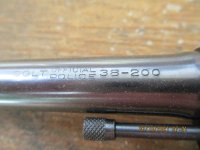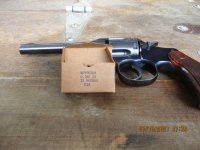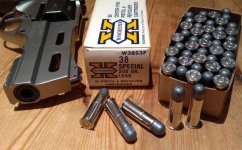500 fps out of a snubby?? Remember those old timey films of those traveling shows where the guy caught a bullet in his teeth? Maybe it was possible after all.
I've seen chronograph tests from years ago that listed velocities in the high 500 to 600fps from a 2 inch bbl.
As far as catching a bullet in your teeth, think about catching a broad head traveling at half the velocity of those 200 grainers, in your teeth. I don't think there would be any volunteers for that.
The low velocity concept interests me. All of those black powder revolvers from years ago seemed to be satisfactory back then. They could have lengthened the revolver cylinder to achieve higher velocities but did not do it. In fact, in the case of the .44 caliber revolvers, Colt shortened the Walker cylinder when they came out with the Dragoons and then shortened the cylinders some more for the 1860 Army; no one seemed to complain. Something similar was done to the .45 Long Colt cartridge. People seemed to be satisfied as long as there was adequate penetration.
I tried the Remington and Winchester 200gr loads in my M60, which shot a little low with 158 gr loads.They shot to point of aim with that gun; wish I had some more, I might carry them.





